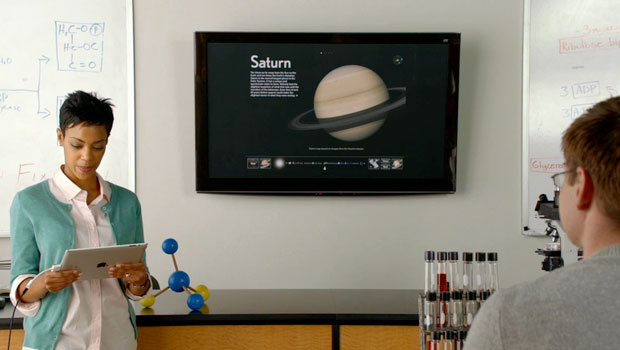 |
| Photo Courtesy of Engadget |
Fine, people are going to argue that Apple has a closed ecosystem and too tight of controls and data should be free to flow, blabla bla. I still think that way but what they created was their own ecosystem that works and is universally accepted. 15 million sold in the first 9 months says it all.
What the first iPad has done for me is changed the way I interface with content. Before we sat in front of a keyboard and mouse and worked with data, clicking, typing, viewing from a distance. It was cold and impersonal. What the iPad has done is make it a more organic experience. No other device has done that. I’ve owned palms, windows mobiles, tablet PC’s, everything that I thought would create that truly organic experience but fell short because I was still a slave to the interface. It’s transformative and opens your eyes in a whole new way, even for a data junkie like me.
One key part that Apple added to this device is the ability to display the screen to an output device such as a projector or HD TV. That was one critical piece that makes it a great presentation tool. Now teachers can open up any app and show what they are seeing on the screen to the class. There are thousands of apps that are excellent for education and this new tool opens up the audience that can effectively use it. The details are still sketchy on if this display option works with existing iPads, so I’m keeping my eyes and ears out for that confirmation!
I’ve already seen wonderful applications in education with this amazing device, but what will Android do? So far I’ve seen no evidence of upward mobility for the current batch of popular Android devices. It’s not because Honeycomb is not a superior tablet OS, or the devices don’t perform, it is because they are slaves to the carrier. Take for example the Motorola Xoom and the Samsung Galaxy Tab. These are great tablet devices but they require you to sign up with their carrier to gain a discount and in the case of the Xoom, you have to activate at lease one month of service. They do not offer the option to get a WiFi only model and only say it will come in the future. I can never see public education institutions picking these devices up with this necessary feature and expense they will never use. I think Android tablets makers are shooting themselves in the foot by not opening their devices up to non carrier use.
The current crop of Android devices are not ready for the main stream. With little app support and the promise of future upgrades, they are devices for the anti-Appleites or the super geeks. Apple has once again bested Android makers. I truly hope that someone will wise up and produce the next gen tablet I can drool over.
Apple with help transform education, it’s up to the others to play catch-up now.

I have already purchased a samsung tablet and I love it. Thanks
ReplyDeleteGiven that a year ago this category of devices never existed, I agree, anything is better than nothing. I know a few have it and love it but it's not ready for main stream and definitely not a viable product in K-12 yet.
ReplyDelete